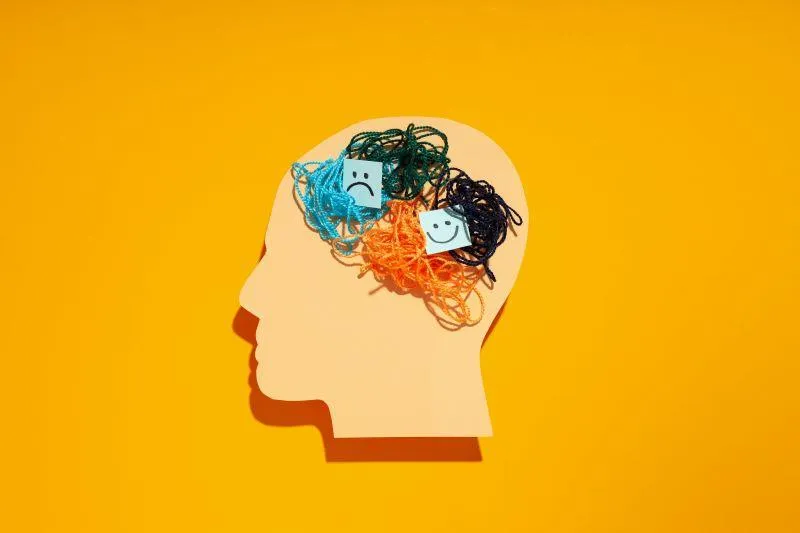
Rewiring for Connection: How Neuroscience Can Help Us Heal Loneliness and Rebuild Relationships — With Others and Ourselves
In a world reeling from political division, global upheaval, and the lingering effects of a worldwide pandemic, loneliness has quietly become an invisible epidemic.
Everywhere you look, people are craving something simple yet profound: to feel seen, heard, valued — and loved.
The beautiful truth is this: you were never meant to live disconnected.
Your brain and your heart were designed for deep, meaningful connection — not just with others, but with your own soul.
Your Brain Is Wired for Belonging
Human beings are not wired for isolation. From the earliest days of our species, belonging wasn’t a preference — it was survival.
And that deep need hasn’t changed.
Think of it this way: when you feel truly accepted, your brain’s "happiness centers" switch on, strengthening your sense of trust, connection, and emotional balance.
But when loneliness lingers too long, it slowly dims these centers, making the world feel colder, more distant, and harder to navigate.
Connection isn’t a luxury.
It’s as essential to our well-being as food, water, and air.
Your Brain Can Rewire for Connection
Even if you feel numb, guarded, or alone right now — your brain holds hope.
Thanks to the power of neuroplasticity, it’s possible to rebuild the pathways of trust, safety, and love.
Every small choice you make to reach out — to yourself or to another — plants a seed.
Every seed, with time and nurturing, can grow into a new, life-giving connection.
6 Neuroscience-Based Ways to Rebuild Connection
Here are six powerful, research-backed practices to help you reconnect — with your people, your community, and your own heart.
1. Regulate Before You Relate: Create Inner Safety First
When our nervous system is stuck in fight, flight, or freeze, connection feels dangerous — even when it’s exactly what we crave.
The vagus nerve acts like a bridge between our heart, brain, and others. When we calm it, we send ourselves a powerful message:
"You are safe now. You can open your heart."
Practice: Before engaging with others, pause.
Take three slow, conscious breaths: inhale for 4 counts, hold for 4, exhale for 6.
Feel your body soften. Feel the walls lower.
2. Listen to Understand, Not to Respond
True connection isn’t built on words alone — it’s built on presence.
Our mirror neurons respond deeply when someone genuinely attunes to us, reflecting our emotions and validating our experience.
Practice:
Make eye contact.
Mirror their energy and tone gently.
Listen not for what you’ll say next, but for what their heart is whispering.
Presence heals more than advice ever could.
3. Create Tiny Moments of Connection Every Day
The human brain is nourished by small, genuine interactions, not just grand gestures.
Every smile, every kind word, every moment of eye-to-eye warmth releases oxytocin, the hormone of trust and belonging.
Practice: Challenge yourself to create three micro-moments of connection each day.
A kind hello to a stranger.
A note of appreciation to a friend.
A quiet hand on your heart, whispering: “I’m here.”
4. Turn Toward Yourself with Tenderness
You can’t pour from an empty heart.
When we berate ourselves, we activate the same brain regions that light up under social rejection.
When we practice self-compassion, we light up the regions linked to love, safety, and healing.
Practice: When you hear your inner critic, pause.
Offer yourself the kindness you would a dear friend.
Even simple words like “It’s okay, you’re learning” can start to rewire your heart.
5. Repair Hurts Gently and Early
All relationships experience ruptures — missed calls, sharp words, misunderstandings.
The key isn’t avoiding them. It’s healing them quickly.
The brain scans constantly for signs of rejection or repair. Even small moments of reconnection can build deeper safety than ever before.
Practice: When something feels unsettled, speak up with warmth.
“I realize I hurt you — and I care about making it right.”
“Can we talk about what happened? I want us to feel close again.”
Repair is the most sacred work of all.
6. Find Flow and Remember Who You Are
Loneliness doesn’t just separate us from others — it separates us from ourselves.
When you lose yourself in creativity, play, or meaningful work, your brain enters flow, releasing a symphony of dopamine, serotonin, and peace.
Practice: Return to what you love.
Dance.
Paint.
Hike under the open sky.
Write.
Build.
Find the activities where time disappears — and you reappear.
Final Reflection: Connection Is Always Possible
You don’t have to wait until the world heals to feel whole again.
You don't have to wait until everything is perfect to offer your heart.
Every moment of presence, kindness, and courage you choose today rebuilds your inner world.
And from there — your outer world will begin to transform, too.
Your brain is ready. Your heart is waiting.
The next step is yours.
What is one small act of connection you can offer — to yourself, or to someone else — today?
🌿 If you’d like more soul-nourishing practices for reconnection and healing, subscribe for weekly insights delivered with love. 🌿
